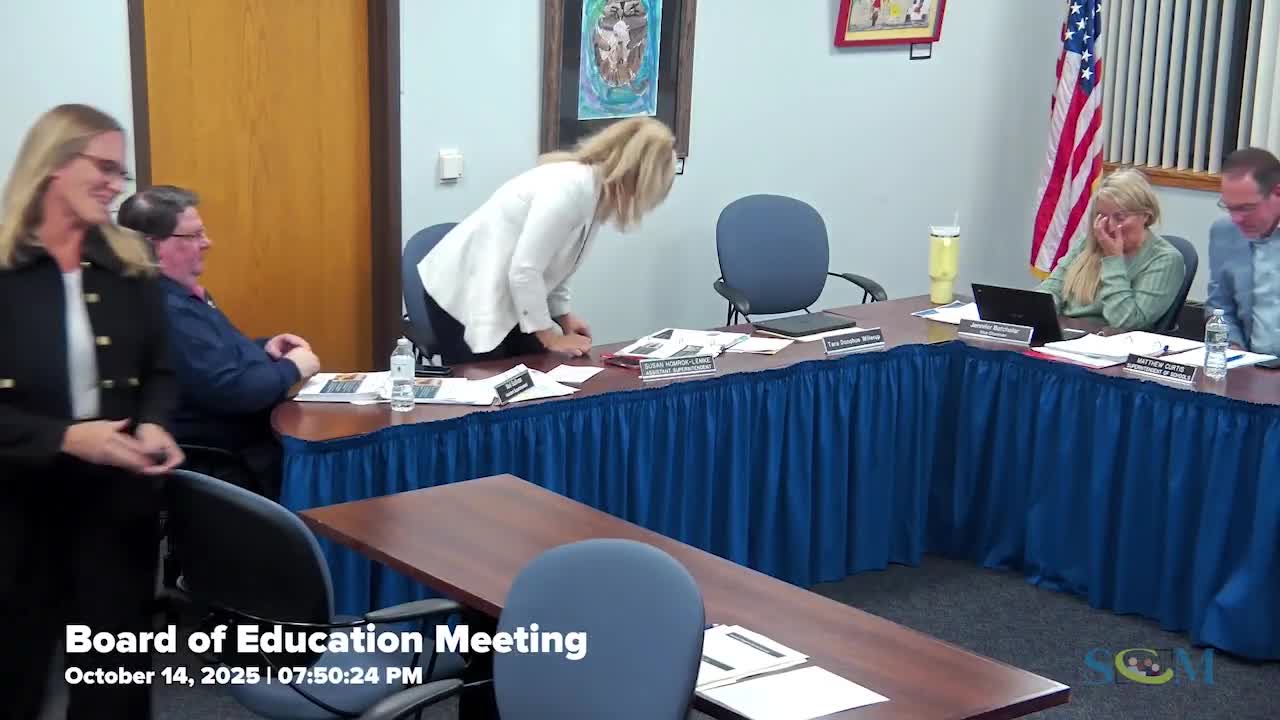State special‑education rules push districts toward in‑district programs; seed and behavioral‑health grants offered
October 15, 2025 | Simsbury Center, Capitol County, Connecticut
This article was created by AI summarizing key points discussed. AI makes mistakes, so for full details and context, please refer to the video of the full meeting. Please report any errors so we can fix them. Report an error »

Simsbury’s director of pupil services told the board that recent state legislation aims to contain special‑education costs and encourage districts to expand services in‑district rather than rely on private providers.
Key elements from the legislative overview
- Fixed annual cost: private providers cannot raise the price of a contracted service during a school year unless the student’s individualized education program (IEP) changes the service provided. District staff said that provision prevents mid‑year price increases for services such as related therapeutic supports.
- Rate setting: the legislature created a rate‑setting framework for third‑party related services (speech and language, occupational therapy, physical therapy and similar services). The district was told to expect rate‑setting implementation guidance targeted for Jan. 1, 2028; exact rules and implementation details will be set by the state education agency.
- Grants and seed money: the legislation creates several grant lines to expand in‑district programming. Simsbury’s preliminary FY‑26 allotment for the “special education expansion/development” (seed) grant was listed at about $99,000; officials noted the grant would be significantly larger if the program were fully funded to statutory levels. The district also described a separate competitive grant for in‑district program development and a behavioral‑health support grant (guidance and timing still pending).
Why this matters: the combination of rate setting, fixed annual costs and seed grants is intended to lower reliance on costly out‑of‑district placements, encourage districts to build capacity locally and increase transparency about program cost across providers and districts.
District context
District staff said Simsbury has already expanded local capacity (for example, by bringing the New Path program into the district) and will seek available competitive and formula grants to expand in‑district options. Administrators cautioned that many implementation details — for example, whether a particular use of seed money counts as “new” in future years — are still unresolved and depend on state guidance.
Ending: staff said they will monitor state guidance on rate setting and grant eligibility and return to the board with recommended uses of any award funds and budgeting implications.
Key elements from the legislative overview
- Fixed annual cost: private providers cannot raise the price of a contracted service during a school year unless the student’s individualized education program (IEP) changes the service provided. District staff said that provision prevents mid‑year price increases for services such as related therapeutic supports.
- Rate setting: the legislature created a rate‑setting framework for third‑party related services (speech and language, occupational therapy, physical therapy and similar services). The district was told to expect rate‑setting implementation guidance targeted for Jan. 1, 2028; exact rules and implementation details will be set by the state education agency.
- Grants and seed money: the legislation creates several grant lines to expand in‑district programming. Simsbury’s preliminary FY‑26 allotment for the “special education expansion/development” (seed) grant was listed at about $99,000; officials noted the grant would be significantly larger if the program were fully funded to statutory levels. The district also described a separate competitive grant for in‑district program development and a behavioral‑health support grant (guidance and timing still pending).
Why this matters: the combination of rate setting, fixed annual costs and seed grants is intended to lower reliance on costly out‑of‑district placements, encourage districts to build capacity locally and increase transparency about program cost across providers and districts.
District context
District staff said Simsbury has already expanded local capacity (for example, by bringing the New Path program into the district) and will seek available competitive and formula grants to expand in‑district options. Administrators cautioned that many implementation details — for example, whether a particular use of seed money counts as “new” in future years — are still unresolved and depend on state guidance.
Ending: staff said they will monitor state guidance on rate setting and grant eligibility and return to the board with recommended uses of any award funds and budgeting implications.
View full meeting
This article is based on a recent meeting—watch the full video and explore the complete transcript for deeper insights into the discussion.
View full meeting
